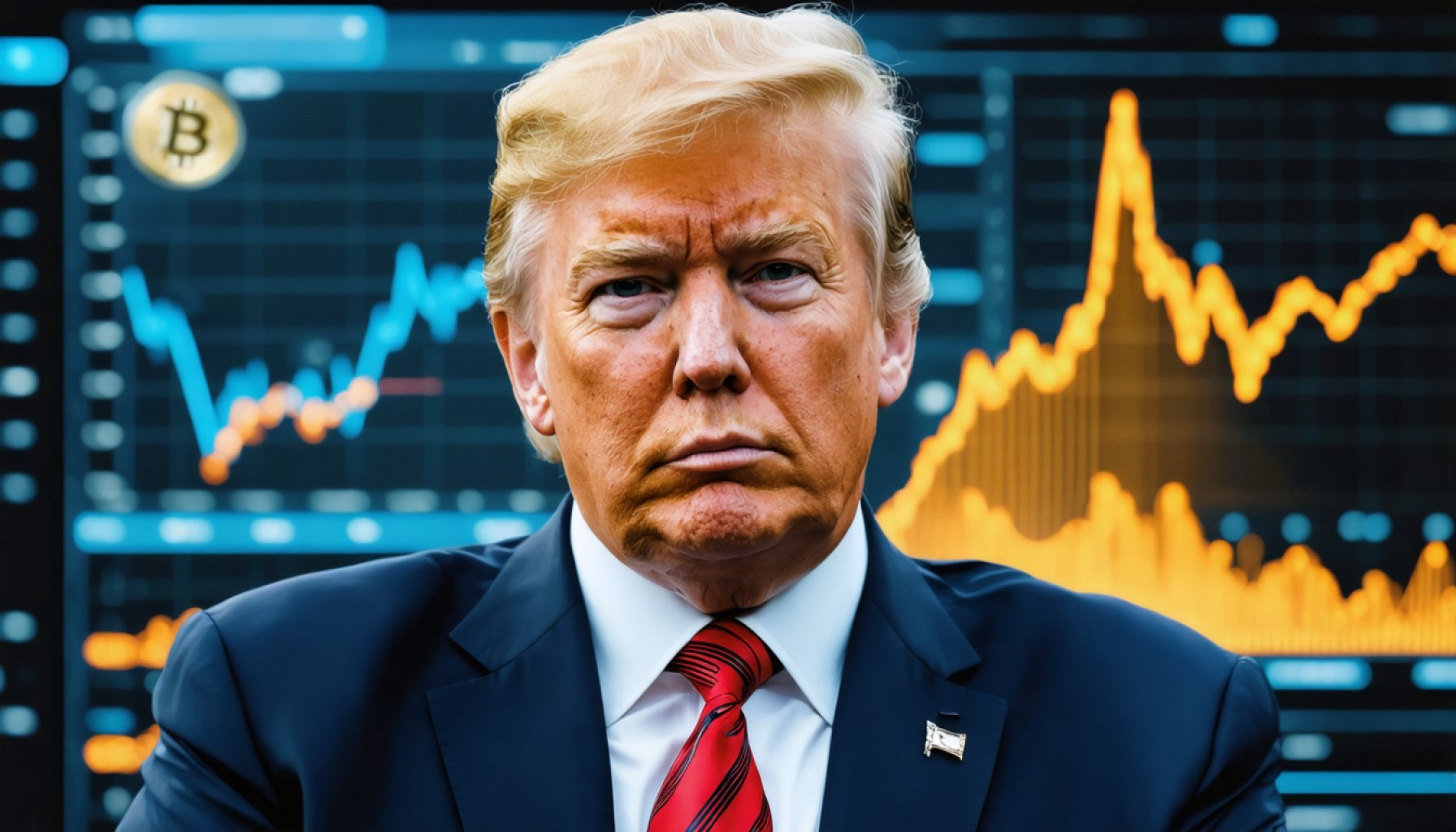- Bitcoin’s value dropped by 4%, hitting around $82,000, as a response to new tariffs announced by President Donald Trump.
- Other cryptocurrencies like Ethereum, XRP, and Solana also experienced declines, reflecting market-wide anxiety.
- The new tariffs include a minimum 10% levy on all U.S. exports, with higher rates for countries like China (34%), India (26%), and Japan (24%).
- The European Union faces a tariff of 20%, affecting global economic projections and investor confidence.
- Gold prices surged to nearly $3,160 an ounce, highlighting its status as a safe-haven asset during economic turmoil.
- Market analysts emphasize the psychological impact of policy-driven volatility, with concerns extending beyond the tariffs themselves.
- Investors are urged to prepare for a shifting financial landscape, requiring strategic foresight and adaptability.
Amid the chaotic swirl of economic uncertainty, a lightning bolt struck the cryptocurrency market as President Donald Trump’s freshly unveiled tariffs reverberated across the globe. Bitcoin, the titan of digital currency, once riding high, found itself slipping precipitously. A mighty 4% drop saw its value tumbling to around $82,000, leaving investors in a flurry of recalculations and concerns. This wasn’t merely a Bitcoin story; the entire crypto landscape felt the tremor. Ethereum, XRP, and Solana each registered their own stumbles, echoing the market’s collective anxiety.
The President’s announcement, a strategic, albeit controversial, decision to impose a minimum 10% tariff on all exporters to the United States, instigated a significant ripple effect. Countries with stark trade imbalances, like China, India, and Japan, were hit with even steeper levies — 34%, 26%, and 24% respectively. For the European Union, a 20% tariff loomed ominously, casting a shadow over economic projections and investor confidence worldwide.
Cryptocurrencies, often perceived as the wild stallions of the financial market, have historically wavered in the face of unpredictability. The current downturn reflects a well-documented sensitivity to policy-driven volatility, a specter made more ominous by these tariffs. Gold, however, basked in its haven status, climbing to unprecedented heights of nearly $3,160 an ounce, a testament to its enduring allure in turbulent times.
Industry analysts recognize these shifts as emblematic of deeper market psychology. Ben Kurland, a noted voice in crypto research, stresses the implications of this volatility, highlighting how traders dread such unpredictability more than the tariffs themselves. This signals a potentially tumultuous road ahead, marked by not just the tangible effects of economic policies, but the intangible climate of market sentiment they engender.
For investors navigating this turbulent sea, the takeaway is clear: brace for impact. The financial terrain is shifting, not just in numbers and percentages, but in the fundamental rhythm of risk and security. As traditional and digital assets recalibrate their positions, the pressing challenge is discernment — a keen understanding of when to hold steady and when to pivot. With vigilance and strategic foresight, navigating the evolving market space remains possible, even promising, for those who can see beyond the immediate horizons of doubt.
The Hidden Impacts of Trump’s Tariffs on Cryptocurrency: What Every Investor Needs to Know
Understanding the Current Landscape
In recent times, the global economy has been a whirlwind of uncertainty, with cryptocurrencies at the center of the turmoil. With President Donald Trump announcing new tariffs, the crypto market was noticeably shaken. A significant highlight of this disruption was Bitcoin’s tumble, marking a 4% drop, and sending its value spiraling towards $82,000. Not only Bitcoin but other major players like Ethereum, XRP, and Solana also registered noticeable declines.
How Tariffs Affect Cryptocurrency Markets
At a glance, tariffs may seem to be matters simply related to traditional trade and goods. However, their impact extends into cryptocurrency, primarily due to:
1. Market Sentiment: Cryptocurrencies tend to react strongly to changes in market sentiment. Tariffs influence economic stability perceptions, making digital assets like Bitcoin susceptible to volatility.
2. Fiat Currency Influence: Tariff policies often impact global currency markets. Fluctuations in fiat currencies indirectly affect cryptocurrency prices as investors look to hedge their bets.
3. Capital Flight: Higher tariffs may cause capital to move towards ‘safer’ assets like gold, pulling away investments from riskier cryptocurrencies.
Industry Trends and Predictions
With these economic shifts in mind, here are some insights and predictions for the cryptocurrency market:
– Increased Volatility: Expect short-term fluctuations as the market digests these economic changes.
– Long-Term Growth: Despite short-term declines, the overall trend for major cryptocurrencies remains bullish as they become increasingly integrated into global finance.
– Regulatory Scrutiny: With tariffs affecting economies, expect governments to scrutinize digital assets more closely as avenues for unregulated financial flows.
Practical Strategies for Crypto Investors
Navigating these turbulent times requires strategy and foresight. Consider the following actionable recommendations:
1. Diversification: Don’t put all your eggs in one basket. Diversifying across various assets, including commodities like gold, can hedge against volatility.
2. Stay Informed: The crypto landscape changes rapidly. Keep up with news and expert analyses to better understand how global events, like tariff implementations, affect the market.
3. Long-Term Focus: In uncertainty, it’s wise to maintain a focus on long-term growth rather than letting short-term volatility dictate investment decisions.
Addressing Common Questions
Q: Why did Bitcoin react to the tariffs announcement?
Bitcoin and other cryptocurrencies are highly sensitive to shifts in economic policy due to their speculative nature. Economic disturbances can alter investor confidence, leading to market adjustments.
Q: Should I sell my crypto holdings due to these market fluctuations?
Selling in a frenzy might not be the best move. Assess your risk tolerance, consider whether your investment strategy is long-term, and make informed decisions based on comprehensive market analysis.
Conclusion: Navigating the Future
As the dust settles, it’s crucial for investors to remain vigilant. The fluctuating landscape of cryptocurrencies will continue to test the resilience and strategy of investors. Harnessing data, expert insights, and strategic analysis are key to successfully navigating this dynamic environment.
For those interested in tracking real-world crypto trends and market analyses, resources like CoinDesk offer invaluable insights into the evolving world of digital finance. Employing these resources will equip you with the knowledge needed to make informed investment choices in these unpredictable times.







